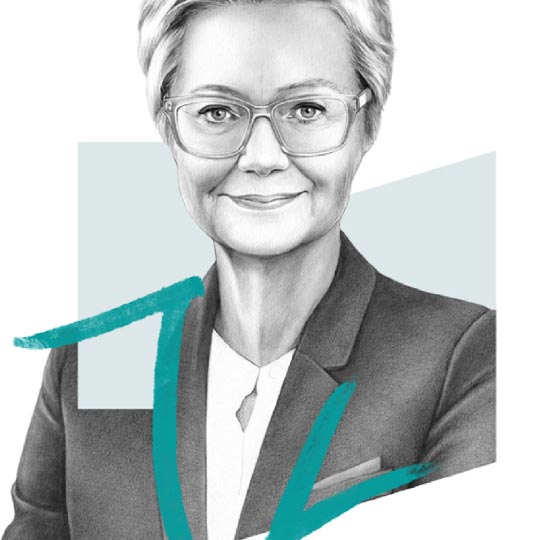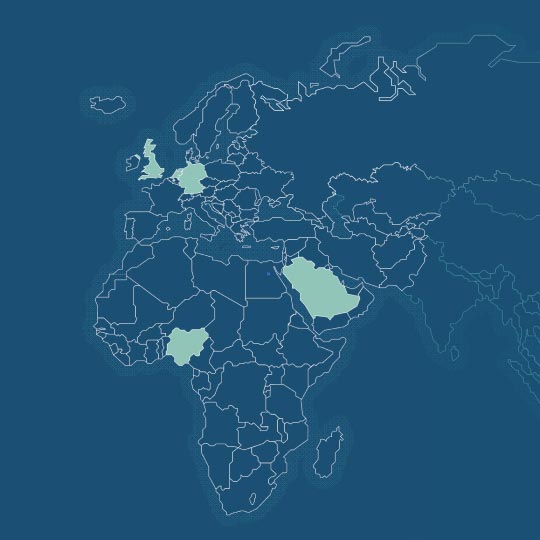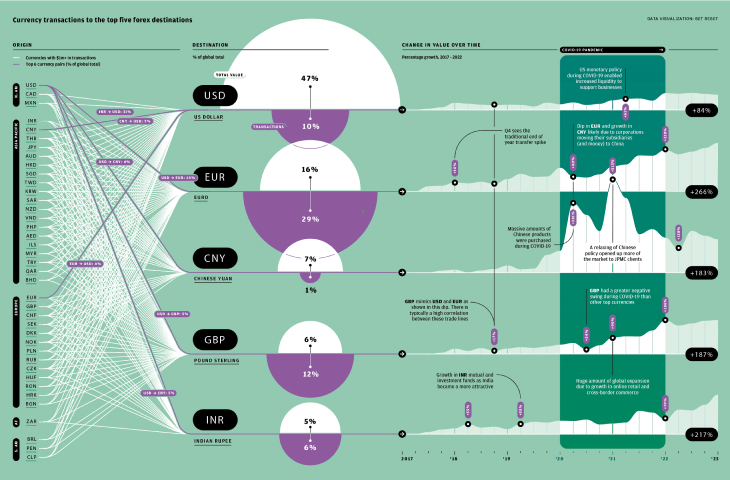From startups to legacy brands, you're making your mark. We're here to help.
-
Innovation Economy
Fueling the success of early-stage startups, venture-backed and high-growth companies.
-
Midsize Businesses
Keep your company growing with custom banking solutions for middle market businesses and specialized industries.
-
Large Corporations
Innovative banking solutions tailored to corporations and specialized industries.
-
Commercial Real Estate
Capitalize on opportunities and prepare for challenges throughout the real estate cycle.
-
Community Impact Banking
When our communities succeed, we all succeed. Local businesses, organizations and community institutions need capital, expertise and connections to thrive.
-
International Banking
Power your business' global growth and operations at every stage.
Key Links
Prepare for future growth with customized loan services, succession planning and capital for business equipment.
-
Asset Based Lending
Enhance your liquidity and gain the flexibility to capitalize on growth opportunities.
-
Equipment Financing
Maximize working capital with flexible equipment and technology financing.
-
Trade & Working Capital
Experience our market-leading supply chain finance solutions that help buyers and suppliers meet their working capital, risk mitigation and cash flow objectives.
-
Syndicated Financing
Leverage customized loan syndication services from a dedicated resource.
-
Commercial Real Estate
Capitalize on opportunities and prepare for challenges throughout the real estate cycle.
-
Employee Stock Ownership Plans
Plan for your business’s future—and your employees’ futures too—with objective advice and financing.
Key Links
Serving the world's largest corporate clients and institutional investors, we support the entire investment cycle with market-leading research, analytics, execution and investor services.
-
Institutional Investors
Putting your long-tenured investment teams on the line to earn the trust of institutional investors.
-
Markets
Direct access to market leading liquidity harnessed through world-class research, tools, data and analytics.
-
Prime Services
Helping hedge funds, asset managers and institutional investors meet the demands of a rapidly evolving market.
-
Global Research
Leveraging cutting-edge technology and innovative tools to bring clients industry-leading analysis and investment advice.
-
Securities Services Solutions
Helping institutional investors, traditional and alternative asset and fund managers, broker dealers and equity issuers meet the demands of changing markets.
Key Links
Providing investment banking solutions, including mergers and acquisitions, capital raising and risk management, for a broad range of corporations, institutions and governments.
-
Center for Carbon Transition
J.P. Morgan’s center of excellence that provides clients the data and firmwide expertise needed to navigate the challenges of transitioning to a low-carbon future.
-
Corporate Finance Advisory
Corporate Finance Advisory (“CFA”) is a global, multi-disciplinary solutions team specializing in structured M&A and capital markets. Learn more.
-
Development Finance Institution
Financing opportunities with anticipated development impact in emerging economies.
-
Sustainable Solutions
Offering ESG-related advisory and coordinating the firm's EMEA coverage of clients in emerging green economy sectors.
-
Mergers and Acquisitions
Bespoke M&A solutions on a global scale.
-
Capital Markets
Holistic coverage across capital markets.
Your partner for commerce, receivables, cross-currency, working capital, blockchain, liquidity and more.
Key Links
A uniquely elevated private banking experience shaped around you.
-
Banking
We have extensive personal and business banking resources that are fine-tuned to your specific needs.
-
Investing
We deliver tailored investing guidance and access to unique investment opportunities from world-class specialists.
-
Lending
We take a strategic approach to lending, working with you to craft the right financing solutions matched to your goals.
-
Planning
No matter where you are in your life, or how complex your needs might be, we’re ready to provide a tailored approach to helping your reach your goals.
Whether you want to invest on your own or work with an advisor to design a personalized investment strategy, we have opportunities for every investor.
-
Invest on your own
Unlimited $0 commission-free online stock, ETF and options trades with access to powerful tools to research, trade and manage your investments.
-
Work with our advisors
When you work with our advisors, you'll get a personalized financial strategy and investment portfolio built around your unique goals-backed by our industry-leading expertise.
-
Expertise for Substantial Wealth
Our Wealth Advisors & Wealth Partners leverage their experience and robust firm resources to deliver highly-personalized, comprehensive solutions across Banking, Lending, Investing, and Wealth Planning.
Explore a variety of insights.
Key Links
Insights by Topic
Explore a variety of insights organized by different topics.
Key Links
Insights by Type
Explore a variety of insights organized by different types of content and media.
Key Links
We aim to be the most respected financial services firm in the world, serving corporations and individuals in more than 100 countries.
Key Links
- Payments
- Payments Unbound
- Payments Unbound - The digital magazine
- Payments Unbound Articles
- LATAM's Payments Landscape Is Evolving Quickly
Featuring future-thinking clients
Payments Unbound unites clients from a wide range of industries to bring you innovative insights that help you navigate the future of payments.
Latin America's new landscape
Trends Watch

Alejandro Pereyra

Harvey Colli
Latin America is not a homogeneous block. It is a tapestry of different political environments, economies and cultures, all with their own nuances. This has created a diverse payments landscape. For example, Buy Now Pay Later (BNPL) is popular in Argentina, account-to-account transfers lead the way in Brazil, Colombians are increasingly adopting digital wallets, and debit cards are on the rise in Chile.
Still, there are some major trends impacting the whole region. One of the most important is the expansion of instant payments schemes, giving millions of consumers access to fast, low-cost money transfers.1,2 Another is a rapid expansion in mobile payments, which has caused a boom in e-commerce. Smartphones now account for two-thirds of online retail transactions in the region.3 Finally, a LATAM-wide wave of regulatory reforms has helped spur the development of fintech sectors. Mexico, Brazil and Chile have all taken significant steps to adapt their regulatory frameworks to embrace the digital financial era.4
As macro trends meet local contexts, key shifts are emerging to which businesses and professionals need to adapt...
In 2023, there were more than 770 fintech start-ups in Mexico representing growth of 18.9 percent year-on-year. If this steep curve continues, Mexico could soon challenge Brazil as the leading regional fintech hub. One key reason for Mexico’s success is its geographic location, near to Texas and California, which has made it a go-to for fintechs that want to be close to these key US innovation centers and their high concentrations of ideas, expertise and venture capital. At the same time, Mexico remains closely tied culturally to Latin America, which makes it a popular gateway for new companies targeting the LATAM market.
Adoption of digital wallets in Colombia has surged from 27 million8 active users in 2021 to around 55 million9 in 2023. This rapid expansion has been driven by economic growth, widespread smartphone ownership and Colombia’s historically large unbanked population10. Popular mobile wallets such as Nequi and Davivienda allow people to easily set up online accounts via their phone and then start making free digital payments. As users never have to visit a branch, it is an effective and popular solution for those previously without bank accounts.
Brazil is making rapid progress when it comes to financial inclusion. Today, 84 percent of Brazilians have a bank account, compared to 70 percent in 2017,5 which means an extra 30 million people now have access to the financial system. For comparison, the average banking rate around the world is 76 percent.6 An important reason for Brazil’s transformation has been the success of Pix, which enables free, real-time, account-to-account transactions between consumers, businesses and government. The system now eclipses credit and debit cards, processing 8.1 billion transactions in Q1 2023 alone, which has incentivised the adoption of bank accounts.7
Debit cards now account for 81 percent of payments in Chile, the highest in the region.14 This is thanks to ever-increasing penetration of CuentaRUT, a “universal” debit card from BancoEstado, Chile’s public bank, that anyone with an identity card can apply for online regardless of income or balance.15,16 Approximately 70 percent of the population are cardholders, and it is a major reason why tap-and-pay has notably high penetration rates in the country.17 This shift happens against the backdrop of non-cash payments overtaking cash for the first time as the dominant way to pay in the LATAM region, according to new research from McKinsey.18
Argentina has been innovative in digital payments (it is home to one of the leading payments providers in LATAM, Mercado Pago), and is currently seeing rapid growth in its buy now pay later (BNPL) market. The sector is expected to increase at a compound annual growth rate of 27.8 percent until 2029.11 BNPL is particularly popular in Argentina as customers use installment payments to protect against high inflation. In 2023, inflation was 211 percent,12 so being able to pay for goods in interest-free installments results in savings: it effectively allows consumers to lock in a price today which will be cheaper tomorrow. Although Argentina’s new government has committed to dollarizing the economy,13 which could bring down inflation, BNPL is expected to remain strong, as even if inflation is reduced, it is expected to remain high by international standards.





BY J.P. Morgan Payments
SOURCES: WWW.JPMORGAN.COM/PAYMENTS-UNBOUND/SOURCES
ILLUSTRATION: JOE WALDRON
MAGAZINE
Volume 6: Open Banking Is Just Getting Started Volume 5: Game Changer Volume 4: Ready Payer One Volume 3: Bank to the Future Volume 2: The New World of Commerce Volume 1: The Money Revolution Browse all articlesWEBINARS
View all webinarsYou're now leaving J.P. Morgan
J.P. Morgan’s website and/or mobile terms, privacy and security policies don’t apply to the site or app you're about to visit. Please review its terms, privacy and security policies to see how they apply to you. J.P. Morgan isn’t responsible for (and doesn’t provide) any products, services or content at this third-party site or app, except for products and services that explicitly carry the J.P. Morgan name.













































































